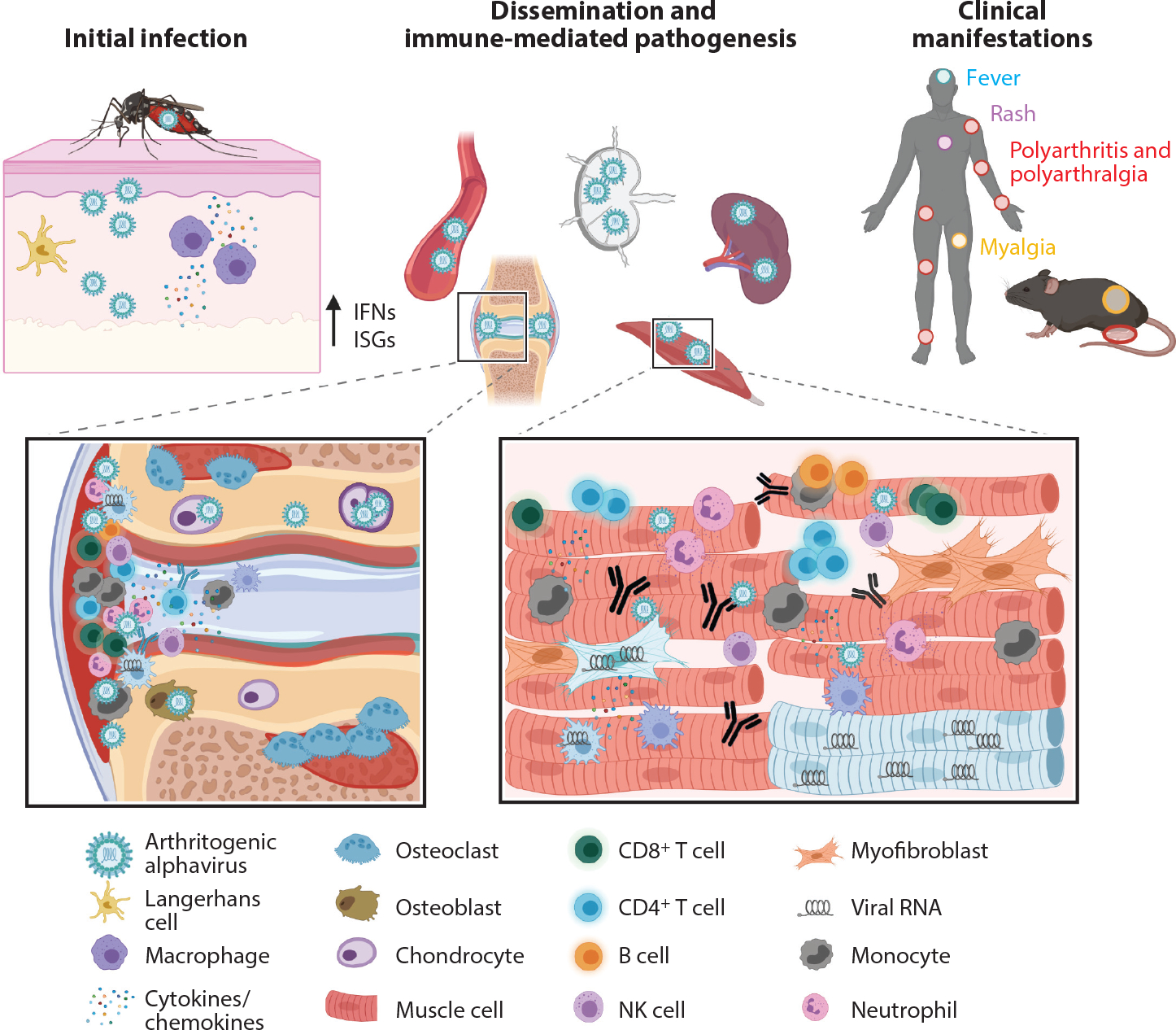Figure 3.

Infection and pathogenesis of arthritogenic alphaviruses. Following a bite from an infected mosquito, arthritogenic alphaviruses replicate locally in fibroblasts, keratinocytes, epithelial and endothelial cells, and/or macrophages. Cellular infection results in induction of type I interferons and expression of ISGs. Virus travels to the lymph node or through the bloodstream to disseminate to peripheral organs, where it replicates to high titers in the joint-associated and musculoskeletal tissues. Infection of osteoblasts promotes osteoclastogenesis and bone erosion. Proinflammatory cytokines and chemokines are released and recruit cells that are essential to control infection but also mediate damage including synovitis, bone reabsorption, and muscle fiber destruction. Macrophages, myofibroblasts, and muscle cells can survive infection and harbor viral RNA many weeks after acute infection. These processes drive the clinical syndromes observed in humans, including fever (blue circle), rash (purple circle), polyarthritis and polyarthralgia (red circles), and myalgia (yellow circle). Abbreviations: IFN, interferon; ISG, interferon-stimulated gene; NK, natural killer. Created with BioRender.com.
